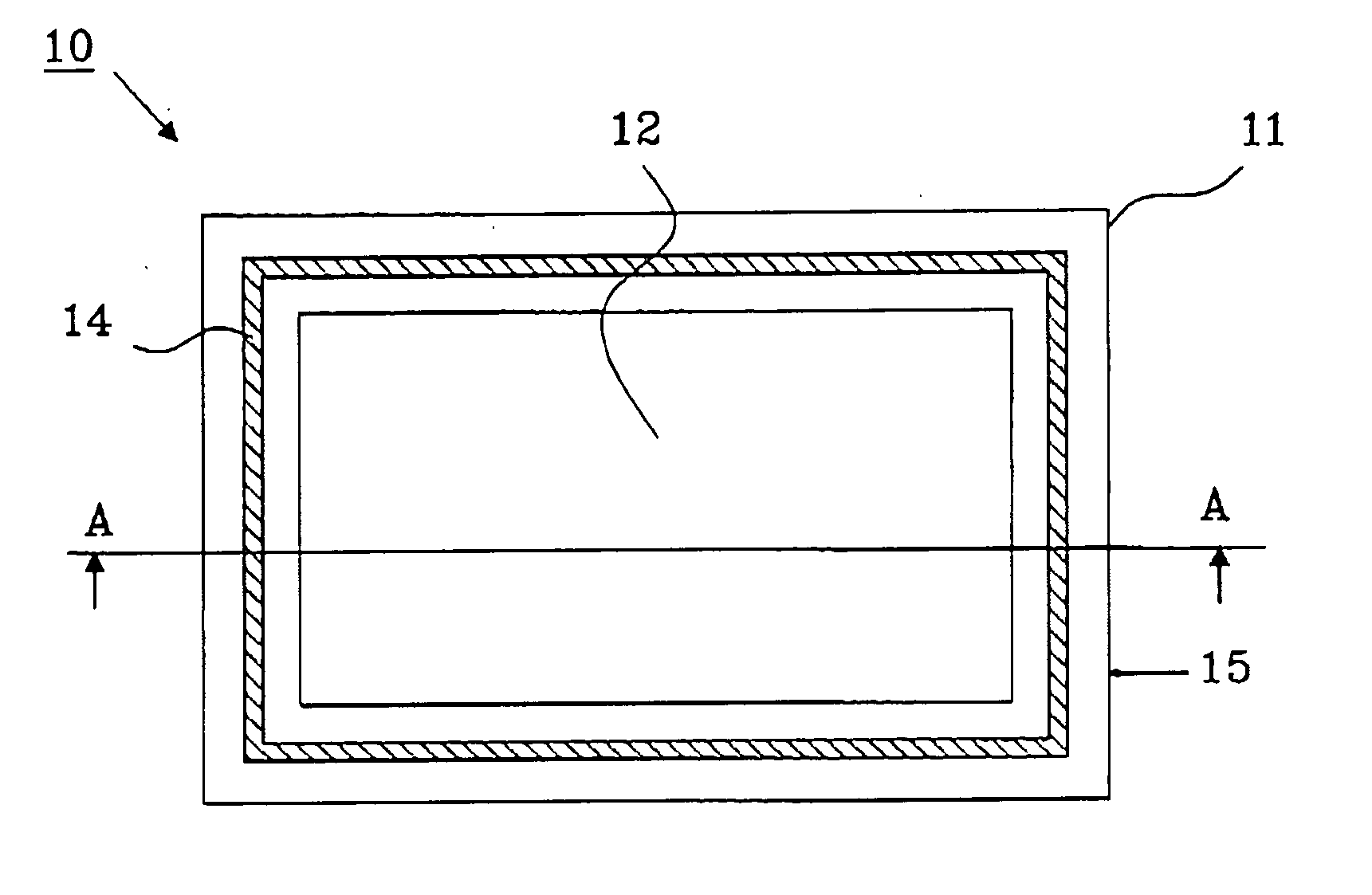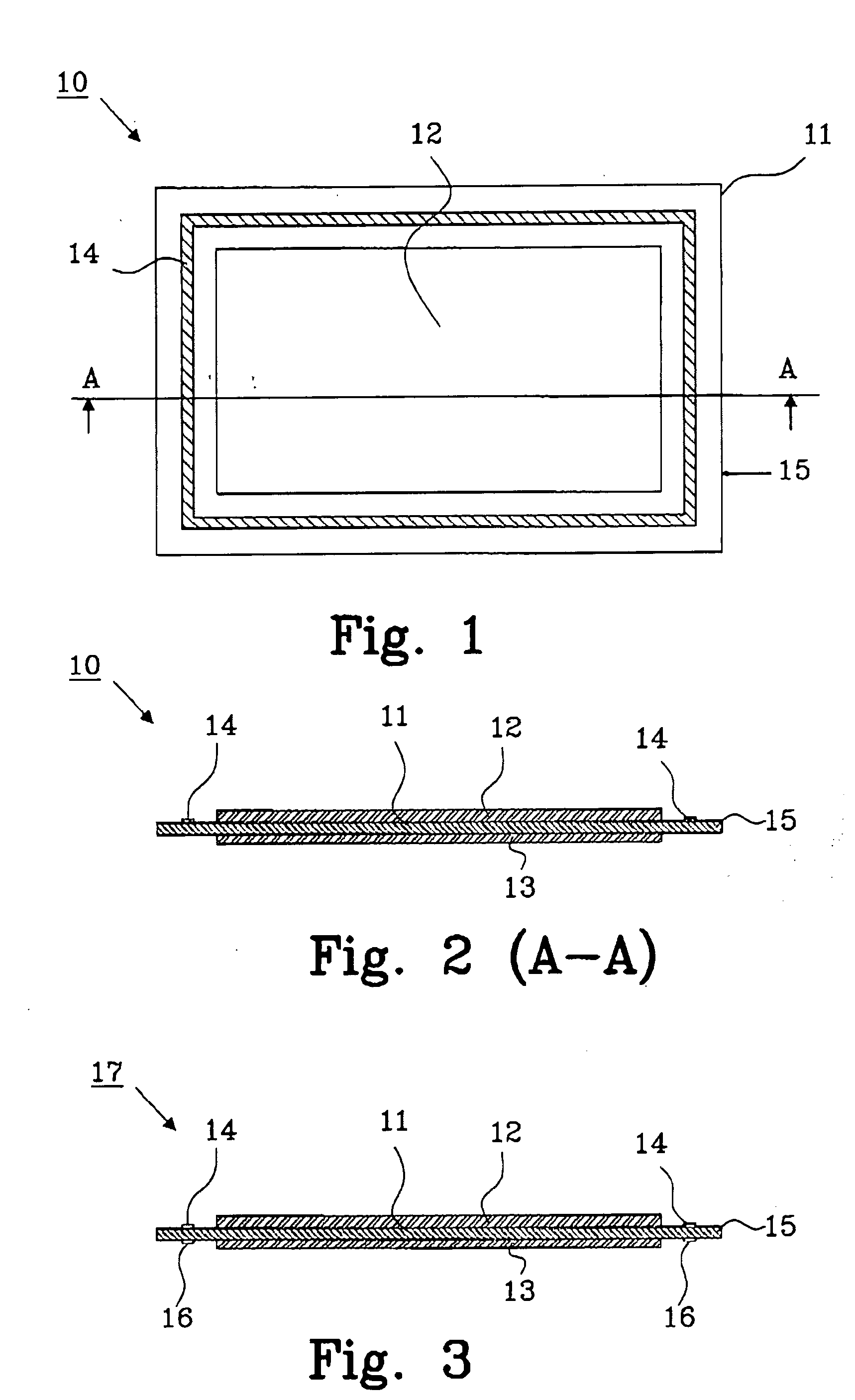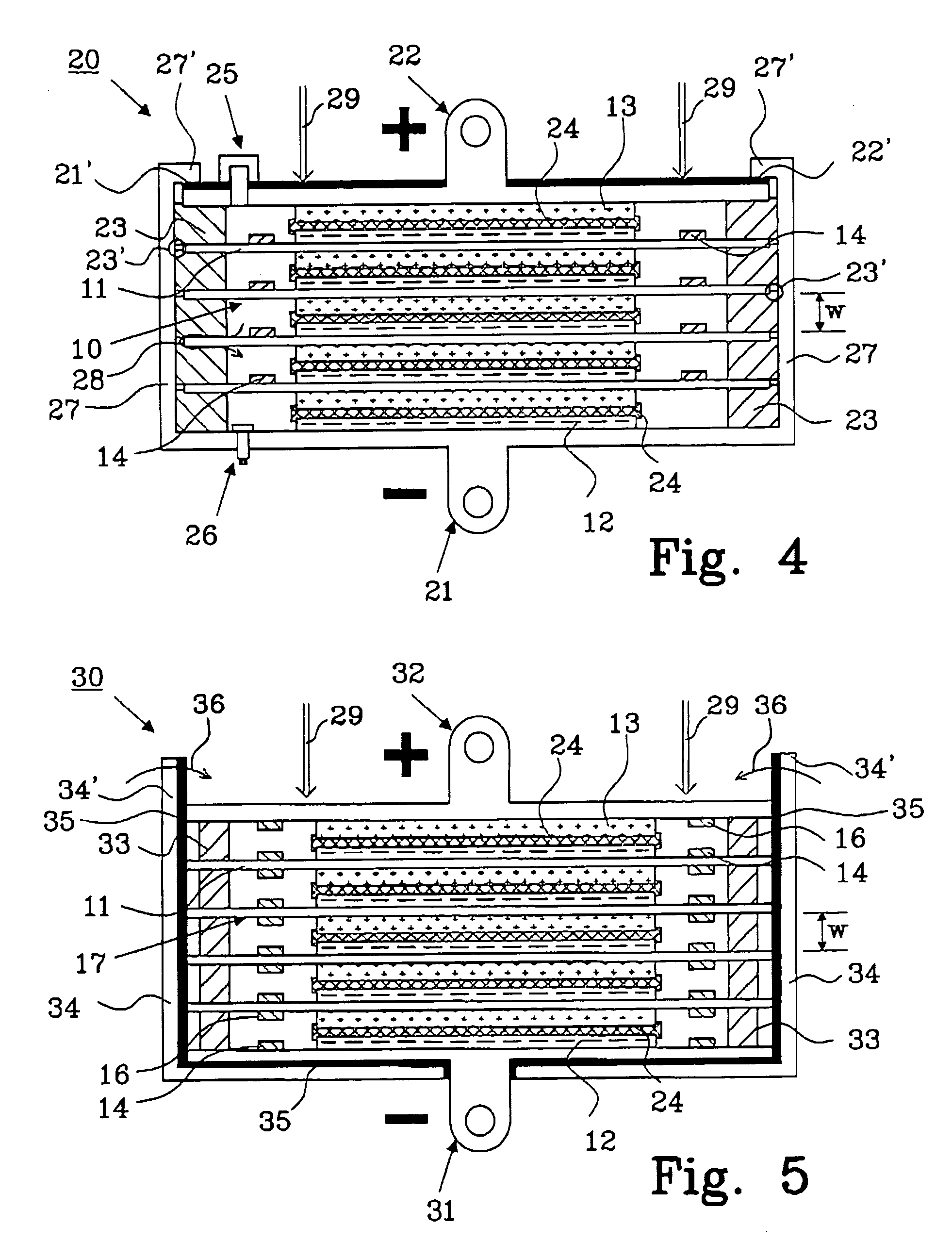Bipolar battery and a method for manufacturing a bipolar battery
a bipolar battery and manufacturing method technology, applied in the field of bipolar batteries, can solve the problems of creating an electrolyte path between adjacent cells, still a disadvantage of the described battery, difficult to achieve, etc., and achieves the effect of improving the operating properties of the bipolar battery, reducing the cost of manufacturing the bipolar battery, and being easy to manufactur
- Summary
- Abstract
- Description
- Claims
- Application Information
AI Technical Summary
Benefits of technology
Problems solved by technology
Method used
Image
Examples
first embodiment
[0040]FIG. 1 is a planar view and FIG. 2 is a cross sectional view (along A-A in FIG. 1) of a biplate assembly 10 comprising a biplate 11, preferably made from Nickel or Nickel plated steel. A negative electrode 12 and a positive electrode 13 are attached to opposite sides, respectively, of the biplate 11. Each electrode is, in this embodiment, arranged to cover only a central portion of the side of the biplate 11 to leave space between each electrode and the edge 15 of the biplate 11 for implementing a means for creating a common gas space for all cells in the battery as described in connection with FIGS. 4 and 5. A hydrophobic electrolyte barrier 14, preventing electrolyte leakage, is provided on one side of the biplate 11 around the electrode, preferably the negative electrode 12, as illustrated in the embodiment.
[0041] The essential part of the invention is that the electrolyte leakage around the perimeter of the electrodes is controlled by the hydrophobic barrier. It is not eve...
second embodiment
[0063]FIG. 5 shows a bipolar battery 30 according to the invention, comprising a negative end terminal 31, a positive end terminal 32 and four stacked biplate assemblies 17. The construction of this battery differs from the battery described in connection with FIG. 4 in the following way.
[0064] No recess is present in the frame 33 determining the width w of each cell. Hydrophobic electrolyte barriers 14 and 16 are present around both the negative electrode 12 and the positive electrode 13 that will prevent passages of electrolyte from one cell to another around the edge of the biplate 11. is Hydrophobic barriers are even present around the negative 12 and positive 13 electrodes of the end terminals, although this is not necessary to maintain operation of the battery. A metallic casing 34 is provided having an insulating layer 35 arranged on the inside, and a separate negative end terminal 31 is therefore present.
[0065] The main feature of the second embodiment is that it is possibl...
third embodiment
[0080]FIG. 6 shows a planar view of a biplate assembly 40, and FIG. 7 shows a cross-sectional view along A-A in FIG. 6. A negative electrode 12 and a positive electrode 13 are arranged on each respective side of a biplate 11, as previously described in connection with FIGS. 1-3.
[0081] A hydrophobic barrier 41 is provided around the edge of the biplate 11. In this embodiment, a part of the positive and negative side of the biplate 11 is covered with the hydrophobic barrier, although this is not necessary to obtain the advantages of the hydrophobic barrier. However, the biplate will in some applications be very thin and there will be a problem when attaching the hydrophobic barrier only to the edge of the biplate 11.
[0082]FIG. 8 shows a third embodiment of a bipolar battery 50 using biplate assemblies 40 as disclosed in FIG. 6 and 7. The basic construction of the battery 50 is the same as the battery described in connection with FIG. 4 with a few exceptions: [0083] Frames 51 of a dif...
PUM
| Property | Measurement | Unit |
|---|---|---|
| Pressure | aaaaa | aaaaa |
| Hydrophobicity | aaaaa | aaaaa |
| aaaaa | aaaaa |
Abstract
Description
Claims
Application Information
 Login to View More
Login to View More - R&D
- Intellectual Property
- Life Sciences
- Materials
- Tech Scout
- Unparalleled Data Quality
- Higher Quality Content
- 60% Fewer Hallucinations
Browse by: Latest US Patents, China's latest patents, Technical Efficacy Thesaurus, Application Domain, Technology Topic, Popular Technical Reports.
© 2025 PatSnap. All rights reserved.Legal|Privacy policy|Modern Slavery Act Transparency Statement|Sitemap|About US| Contact US: help@patsnap.com



